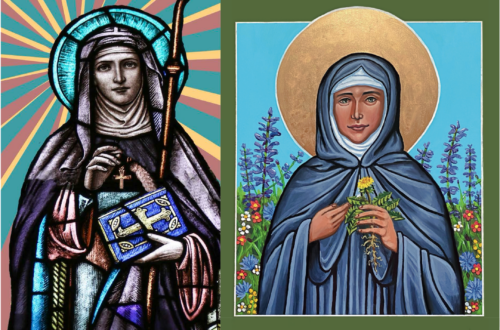The Signs of the Times: Four Generations of US Catholics in Transition
 American Catholics in Transition presents findings from the most recent national survey of US Catholics performed by sociologist William V. D’Antonio and collabo–rators. Collectively, the measures followed by the author over the past 25 years can serve as indicators of the “signs of our times” that reflect the vitality of the Catholic community and serve as portents for the future. They paint a reassuring picture of Catholics’ strong faith and their desire to live lives and build communities that reflect their understanding of God. However, the findings also depict a challenging reality, documenting the institutional church’s increasing inability to respond to the social and spiritual needs of changing communities. The “signs of our times” translate into an impetus to change.
American Catholics in Transition presents findings from the most recent national survey of US Catholics performed by sociologist William V. D’Antonio and collabo–rators. Collectively, the measures followed by the author over the past 25 years can serve as indicators of the “signs of our times” that reflect the vitality of the Catholic community and serve as portents for the future. They paint a reassuring picture of Catholics’ strong faith and their desire to live lives and build communities that reflect their understanding of God. However, the findings also depict a challenging reality, documenting the institutional church’s increasing inability to respond to the social and spiritual needs of changing communities. The “signs of our times” translate into an impetus to change.
Completed in 2011, the survey is the fifth in a series of national surveys on Catholics in the United States conducted by D’Antonio, the first completed in 1987 with subsequent surveys occurring every six years. The periodic nature of these surveys has allowed D’Antonio to track core variables and to examine trends over time. In response to the increased percentage of Catholics who are Hispanic, the 2011 survey is the first to be conducted in both Spanish and -English, allowing analysis of the similarities and differences between Hispanic and non–Hispanic Catholics. Throughout, the book utilizes data from other sources, including the Census Bureau and the Pew Forum on Religion, to contextualize or support the findings.
The results of this latest survey, -coupled with those from previous surveys, provide a rich database that allows the reader to follow the faith experience of US Catholics. In presenting his findings, the author utilizes a framework that divides Catholics into four generations: pre-Vatican II Catholics (born 1940 or earlier); the Vatican II generation (born between 1941 and 1960); the post-Vatican II generation (born between 1961-78); and Millennial Catholics (born between 1979-1993). Findings are carefully contextualized within the social and political context of each generation. This approach allows the reader to follow a generation’s experience and to relate the data to the lived faith experiences of the members of diverse Catholic communities.
The information for 2011 reflects a faith community whose demographics, expression of faith, leadership and relationship to church authority have significantly changed over the last 25 years. The heavily Catholic commu-nities once located in the Northeast and Upper Midwest are now evenly dis-tributed across the US, comprising 24 percent of the population within each of the four census regions. Catholics are clearly on a journey from a church whose membership was primarily the descendants of white European immigrants to an ethnically diverse community with 32 percent of its members now of Hispanic descent.
The expression of the Catholic faith, as reflected by compliance with doctrine regarding marital relationships and sexuality, shows an independence of thought and a distancing from the hierarchy. Leadership structures and core insti-tutions that were vital to the formation of Catholic faith and that responded to the educational and social needs of the faithful are now challenged by the aging of priests and nuns. Despite the influx of new Catholics fueled by Hispanic immigration, the percentage of the general US population that is Catholic remains the same, with an estimated 16 to 20 million individuals who were born Catholic no longer identifying as such.
D’Antonio’s research also reveals a core foundation of shared values, perceptions and beliefs that cross generations and the lines between Hispanics and non-Hispanics. Of particular note is a persistent belief in core teachings that include the bodily resurrection of Jesus, the importance of the sacraments, the teachings on Mary the Mother of God, as well as concern for the poor. A significant majority of Catholics indicate that their Catholic identity is a “very important part” of who they are. A majority of Catholics indicate that it is personally very meaningful to them that Catholics can disagree with doctrine—yet remain loyal to the church. For instance, only 19 percent of Catholics believe that church leaders have the final say on the morality of abortion, and a mere 10 percent believe the hierarchy has the final say on contraception.
There is strong majority agreement on the desire of the laity to participate in key decisions that impact their parish communities. In addition, there is a shared perception by a strong majority of Catholics that the pedophilia scandals have compromised the political and pastoral legitimacy of the bishops. Finally, a majority of those Catholics who have left the church agree that their primary reason for leaving was a divergence with teachings on human sexuality and marriage.
D’Antonio recognizes the serious implications of his data, but he omits a strong rallying call in response to these findings. I fear that the absence of such a call diminishes the challenges that are before us and weakens the potential impact of this important work.
However, even if a call for action were issued, it is unclear to whom it would be addressed. Historically, the Catholic directive is to look to our hierarchy to lead. However, the US hierarchy sits fat and happy and is unlikely to move in a new direction. The arrival of Pope Francis may have signaled a new presentation, but it remains to be seen if his recent enunci-ation of the word “gay” and his stated desire for a theology of women are an actual acknowledgement of the need to revise current doctrine on gender and human sexuality.
This leads to the logical conclusion that the inspiration to change should be addressed to the constituency that has the most to lose—the laity. Here, D’Antonio’s work provides a great service to Catholics in the US, for he not only reminds the reader of the strong doctrinal support for lay leadership, but more importantly documents the committed faith, and the social and political capital, to be found within the laity.
The magic question is how to engage and unlock the power of Catholic laypersons—a question that has already been tackled by many. Perhaps the solution lies in shifting our focus from empowering the laity to force bishops to create the change we desire, to empowering the laity to create that change. What would happen if on a diocesan level “high-end” Catholic donors organized to use their financial clout to ensure that dioceses do not fire gay or lesbian staff because they choose to marry? What would be the result if we convened Catholic women who are theologians, elected officials and the leaders of religious communities to develop and implement strategies that position Catholic women in leadership roles throughout the church? How can we use our shared commitment to the poor to engage Catholic justice organizations, social scientists and elected officials in the development of a national Catholic justice agenda? How can we use the technological tools of online crowdsourcing and innovation jams to engage hundreds of thousands of -Catholics in the envisioning of our future church?
American Catholics in Transition is a strong body of work that reflects both the expertise and the love D’Antonio and his collaborators have for the church. With both affection and skill, they have captured the promise and challenges of the contemporary Catholic church. The book also clearly reflects that we are a community in transition, whose future will be significantly different than our past. What remains to be seen is whose leadership will shape that future.
American Catholics in Transition
William V. D’Antonio, Michele Dillon and Mary L. Gautier
(Rowman & Littlefield, 2013, 216 pp)
978-1442219922, $25.06



